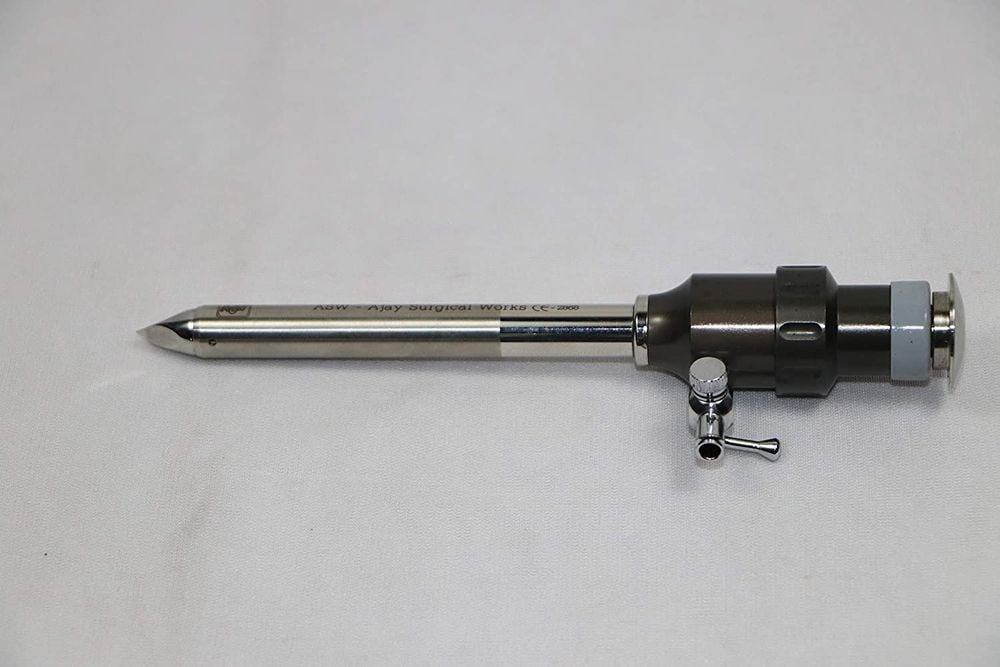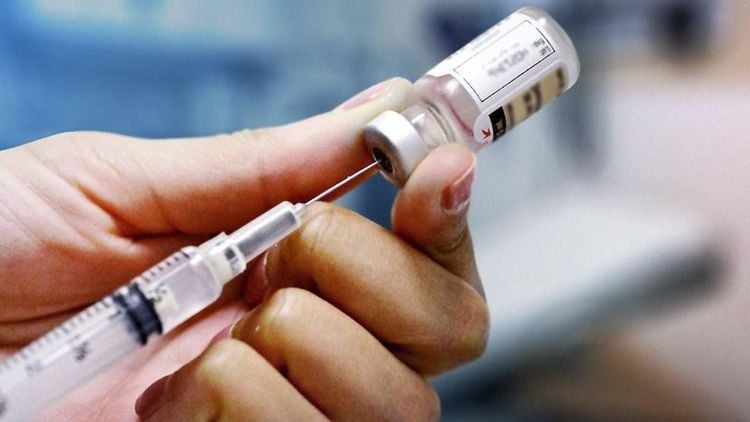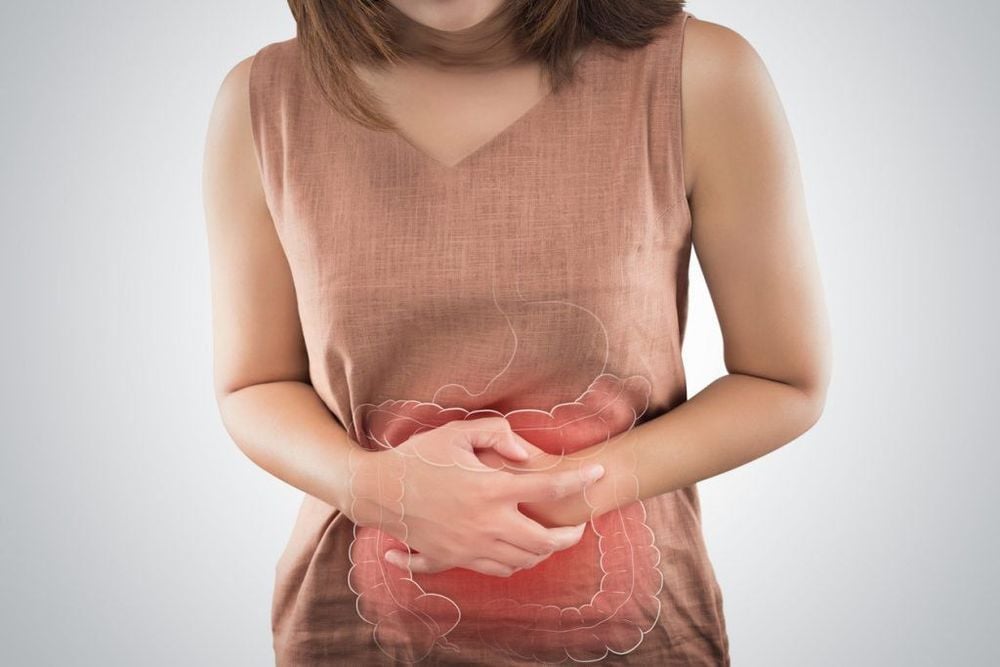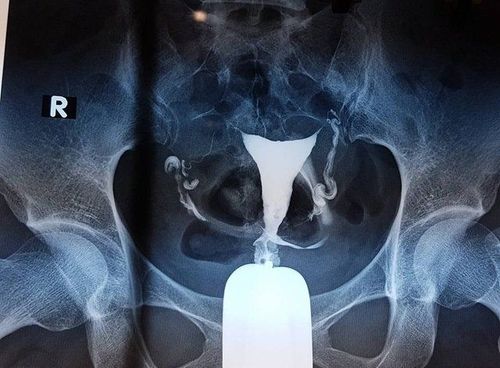This is an automatically translated article.
The article was professionally consulted by BSCK II Pham Thi Tuyet Mai - Department of Obstetrics and Gynecology - Vinmec Hai Phong International General Hospital.The female sterilization procedure has a huge impact on the fallopian tubes and ovaries. Therefore, the care of the fallopian tubes and ovaries after sterilization is the top concern of women.
1. What is female sterilization?
Sterilization is an effective, safe, economical, and simple method of permanent contraception that does not affect the health and sexual desire of the couple. Female sterilization is performed by ligation or cutting of the fallopian tubes, blocking the chance of an egg entering the uterus to become fertilized. Female sterilization is considered a good option when you and your husband have had enough children and do not want to have more children. Sterilization is a boon for busy moms with amnesia, it saves you from having to remember to take your birth control pill every day or use other birth control methods.2. Current popular female sterilization method
There are two common methods of female sterilization today, which are: Laparoscopic sterilization surgery and sterilization surgery through small incisions.2.1. Laparoscopic female sterilization surgery 2.1.1 Preparation Performer: An obstetrician and gynecologist with experience, training and skills in laparoscopic surgery.
Facilities: Laparoscopic sterilization surgery kit
Patient:
Pathological assessment by combined physical examination and specialized examination Counseling the patient about the reasons for surgery and possible risks happens during surgery Finally the patient is signed to commit to the surgery Enema Clean the abdomen and vulva area, urinary catheter..

Người bệnh trước khi triệt sản sẽ được thăm khám chuyên khoa đánh giá tình trạng sức khỏe
2.1.2 Steps to perform Step 1: Inject CO2
The location of the CO2 injection needle is usually just below the patient's navel. In case the patient has an old surgical scar, the middle white line below the umbilicus can be carried out with needle puncture at the left lower costal position or open endoscopy. Inject CO2 to a pressure of about 15mmHg. Alternatively, a trocar can be inserted directly at the umbilicus and then injected with CO2. Stage 2: Trocar puncture
Laparoscope trocar at the umbilicus and surgical trocar on the umbilicus
Stage 3: Evaluate the entire pelvis, observe the uterus
Stage 4. Sterilization
First, burn the fallopian tubes with a knife 2 poles, at the position close to the 2 tubes of the uterus Then use the 1 pole knife to cut the fallopian tubes in half at the newly burned position with the 2 pole knife Use the 2 pole knife to re-ignite the 2 tips of the tubal cutting process. Then 5. Clean the abdominal cavity if necessary and check again.
Then 6. Withdraw the trocar and suture the skin.

Hình ảnh trocar được sử dụng trong phẫu thuật nội soi triệt sản nữ
2.2 Female sterilization through small incision 2.2.1 Preparation Performer : Experienced, trained and skilled obstetrician and gynecologist in sterilization surgery
Supporting equipment : Surgical kit sterilization
Patient:
Advise client on the pros and cons of small incision sterilization Explain what female sterilization procedures will be Take patient history Perform physical and specialized examination Department to evaluate the combined pathology: Blood tests: hemoglobin and hematocrit. The patient is signed an undertaking to perform the surgery; Indenting. Clean the abdomen and vulva, catheterize, disinfect the surgical area Medical records: Surgical medical records according to regulations, approved by the department and hospital leaders and assigned to coordinate surgeons .
When to perform
Prerequisites is that the patient is not pregnant at this time. Time within the first 7 days or 6 weeks postpartum Time within the first 7 days after abortion Combined surgical sterilization after surgery abdomen. 2.2.2 Procedure Steps 1 Anesthesia

Các y bác sĩ sẽ sử dụng thuốc tê với mục đích gây tê tại chỗ giúp người bệnh mất cảm giác vùng
Find and locate the two fallopian tubes Use rat tooth forceps to lift the body of the fallopian tube to form a tubal loop Use a thread to ligate the fallopian tube a part below the loop Cut the upper fallopian tube to tie the thread. Perform the technique with enough gauze, close the abdomen in layers from the inside to the outside.
3. Does female sterilization have any effect?
“Does female sterilization have any effect?” This is probably the issue that many women are most concerned about when they are thinking about this sterilization method. But the women are completely assured because this sterilization method is extremely safe and effective without affecting health, sex as well as daily life of husband and wife. However, there are certain risks when performing sterilization, this condition is very rare and will be promptly intervened by medical professionals. Here are some complications and complications you need to watch out for:Digestive system damage Urinary system damage Blood vessel damage Electrical burns Intra-abdominal bleeding Hematoma Re-pregnancy after sterilization

Triệt sản nữ có thể ảnh hưởng đến hệ tiêu hóa của người bệnh
4. Recovery period after sterilization
After the sterilization procedure, the patient will be monitored every 15 minutes for an hour to make sure that the patient's health is stable and that there are no complications.Usually everyone is discharged on the same day of sterilization without needing to stay in the hospital. The time for patients to recover from sterilization after cesarean section usually takes from 5 days to return. Depending on the case, your doctor may ask you to return for a follow-up exam to examine the wound.
Thus, it can be concluded that female sterilization surgery is the safest method of female contraception today when the couple has reasons not to want to have more children. Please consult your doctor before choosing the method of implementation to bring about high efficiency.
Dr. Tuyet Mai has over 30 years of experience in examination and treatment in the field of Obstetrics and Gynecology, especially in lower-line surgery, family planning, specialized laparoscopic surgery, and multi-surgery management. severe and difficult such as:
Hysterectomy, hymenectomy Surgery for uterine fibroids, cervical cancer Cervical cancer vaccination Cervical cancer early detection Cervical electrocautery Examination and treatment Endocrinology Treatment Any questions that need to be answered by a specialist doctor as well as if you have a need for examination and treatment at Vinmec International General Hospital, you can contact Vinmec Health System nationwide or Register online HERE.














